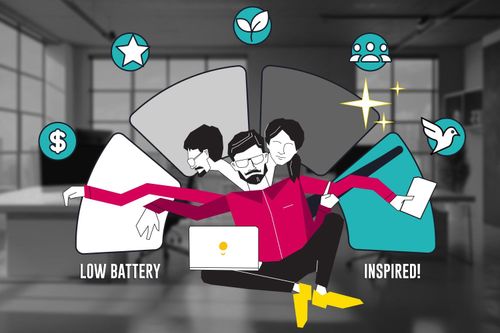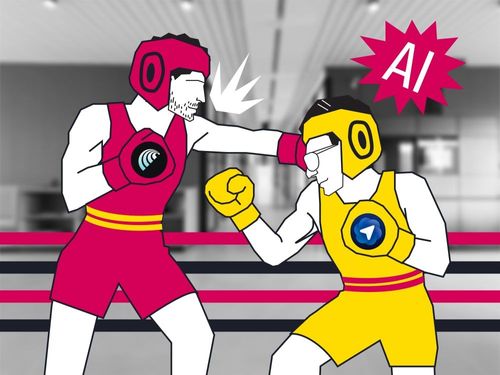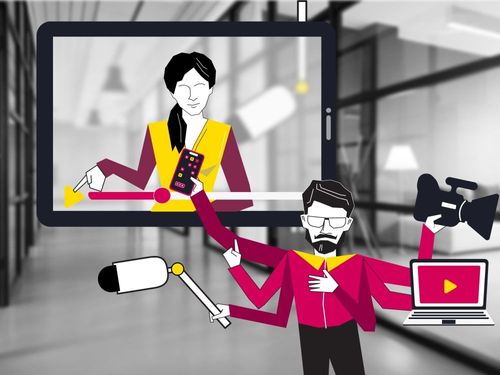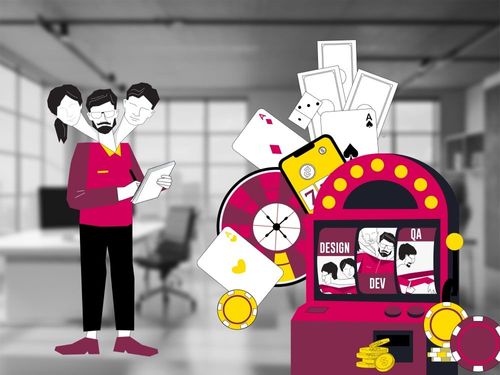
Leadership isn’t about following rules — it’s about inspiring teams, making impromptu decisions. The best tech leaders don’t use a single approach, they are searching for a balance on their team’s maturity, project urgency, and business goals.
As a president at Smartexe, I’ve seen that even intelligent managers can fail due to being committed to a leadership approach that doesn't work.
Meanwhile, the most successful tech leaders switch tactics — sometimes acting as servant leaders, other times making autocratic calls in a crisis.
After exploring long lists of leadership styles, I’ve come across six that are highly applicable in the tech industry. Let’s start by examining them.
1. Servant Leader: People Over Process
Gallup's 2024 report highlights that companies using a servant leader style reduce turnover up to 20%.
Servant leadership focuses on team growth and well-being. This style is about people first approach — this method I’ve found to be highly effective in our support and HR teams.
Servant leadership builds loyalty and long-term engagement by prioritizing personal and professional growth, which is the key to to turnover reduction.
In our customer support and human resources departments at Smartexe, servant leadership fosters a very motivated staff that is dedicated to providing high-quality service.
Is it great for tech leaders, though? Let’s get back to this point later.
2. Democratic Leader: Collaboration for the Win
Democratic styles require involving team members in decision-making processes, that fosters commitment and collaboration. This approach leads to more creative solutions and better support in implementing new ideas.
At Smartexe, this approach has led to breakthrough solutions in product development.
Why It Works in Tech: Teams feel heard and invested in outcomes.
Leads to more creative, well-rounded solutions.
3. Autocratic Leader: Quick, Clear Decisions
The autocratic leaders follow a simple principle: No discussions — just clear, decisive moves. When seconds count, autocratic leaders cut through argument and act swiftly.
Why It Works in Tech: Critical during system failures or security breaches.
Prevents analysis paralysis.
4. Agile Leader: Rapid Adaptation
According to Deloitte's research, agile-led teams achieve 30% higher customer satisfaction due to their adaptability.
Agile leadership suits environments where rapid response and flexibility are crucial. With ever-evolving customer demands, the style enables leaders to encourage new concepts and changes.
At Smartexe, agile leadership has empowered our product development teams, enabling them to discover new possibilities.
Why It Works in Tech: fosters a clear vision, team motivation, and strong collaboration.
5. Laissez-faire Leader: Trust for the Experts
A manager using a laissez-faire leadership style allows experienced employees to take ownership of their work. This approach can be a driver for creativity and innovation.
This method is common in our R&D department, where new ideas is key, and team members thrive under minimal supervision.
Why It Works in Tech: allows creativity to flourish.
6. Data-Driven Leader: Decisions Backed by Numbers
Data-driven leaders use analytics to inform decisions and understand trends, and how to work more efficiently. It makes sure taht strategic decisions are made from real facts, not just gut feelings.
Why It Works in Tech: The ability to back decisions with data minimizes risks and maximizes the chances of success.
What’s the Best Leadership Style?
By this point, I hope you can recognize the small trick I used in this article: there’s no optimal, one-size-fits-all, leadership style. The best leaders don’t stick to a single style—they adapt.
For example, Laissez-faire leadership is a problematic management style for inexperienced teams, but it can be perfect for high-performing teams that require little guidance.
Furthermore, a specific situation can dictate an optimal leadership style. Servant leadership can be optimal for experienced teams nearing burnout.
At the end of the day, a good leader should ask themselves: is my style optimal for this team at this point? And stay flexible when moving from one style to another.
Comparison of leadership styles in software development
| Leadership style | Advantages | Disadvantages | Where It Works |
|---|---|---|---|
| Servant Leader | Builds trust, loyalty, and long-term retention. | Can delay decisions in high-pressure environments | HR, support, or mature engineering teams needing morale or engagement boosts. |
| Democratic Leader | Encourages team involvement and satisfaction. | Slows down decision-making. | Cross-functional teams solving open-ended problems. |
| Autocratic Leader | Efficient and clear decision-making in crises. | Lead to employee dissatisfaction if used excessively. | Incident response, large-scale deployments, disaster recovery. |
| Agile Leader | Inspires innovation and strong team cohesion. | Can neglect detailed operational planning in favor of agility. | Product development, innovation hubs, startups. |
| Laissez-faire Leader | Promotes independence and innovation. | Risks include a lack of direction without proper oversight. | Highly skilled, self-motivated teams, like in R&D. |
| Data-Driven Leader | Enhances decision-making with empirical evidence. | May overlook the human element that qualitative insights provide. | High-performance teams, infrastructure, DevOps, and organizations are scaling rapidly. |
Like this article? Follow me and Smartexe for original content and insights on tech leadership, performance, and productivity.
Looking for a highly-experienced remote team to join your project? Give us a ping.



















